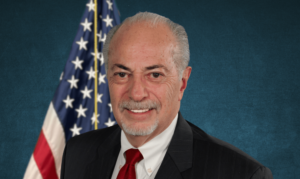Passing the July 31st transportation referendum brings only one certainty: 10 years of increased sales taxes on products and services, including food.
What you get for that $8.5 billion depends on whom you talk to.
Proponents, including the Fayette County Chamber of Commerce, speak fervently, but vaguely, about hope and change for congestion relief and a long list of associated benefits like jobs, quality of life, prosperity, and just about any other favorable outcome they can tie to the vote.
Proponents are noticeably silent, though, about how little impact our 10 years’ worth of taxes and projects will actually have on congestion relief. That’s particularly unsettling, because that’s the purpose of the law and its associated tax. Of course, it’s also the one absolute prerequisite necessary to realize all the other benefits.
Proponents say that spending billions will automatically have a direct and significant impact on your commute, but they never provide even a cursory regional traffic analysis that concludes as much.
At a debate in Cherokee County, one citizen asked the government’s Research Division chief, “… after spending $8.5 billion, which way is that commute time going, and by how much?” The chief responded, “The average commute time really doesn’t change a lot.”
The government did estimate congestion relief for 63 projects, and the greatest relief was 64.5 percent, for the Ga. Highway 74/I-85 intersection. If one of our many airport workers’ afternoon commute took them back to Peachtree City’s athletic fields to see their kid score the winning goal, it would break down like this:
• 18 minutes from the airport to PTC exit, with or without the tax.
• About 6 minutes to get through the intersection without the tax, and 65 percent of that, or 4 minutes, with the improvement from the tax.
• 22 minutes from the exit to the athletic field, with or without the tax.
Total commute times are 46 minutes before 10 years of taxes, and 44 minutes afterwards, a difference of about two minutes, or less than 5 percent. And this example uses the project with the greatest estimated congestion relief.
Also, proponents seldom discuss the 52 percent of regional project money earmarked for buses and trains, and avoid like the plague government’s estimates that those projects will collectively carry less than 2 percent of regional commuters by 2025.
Proponents don’t explain that existing transit is subsidized 80 percent by non-users and no proponent has said, or even suggested, that planned projects won’t bleed the same amount of red ink.
Fortunately, there’s no such transit on our county project list, but if you approve the tax, you and every other regional taxpayer share the financial fallout from transit chosen by the other counties. Under regionalism, their choices matter.
Oddly, Fayette’s Chamber of Commerce cites that as an example of “home rule” — how each county can manage its financial future — when it’s just the opposite.
Another violation of our constitutional home rule principle is that everyone in Fayette County could vote against the tax, and still have to pay it for 10 years if a majority of regional voters approve it.
Bob Ross
Peachtree City, Ga.











Leave a Comment
You must be logged in to post a comment.